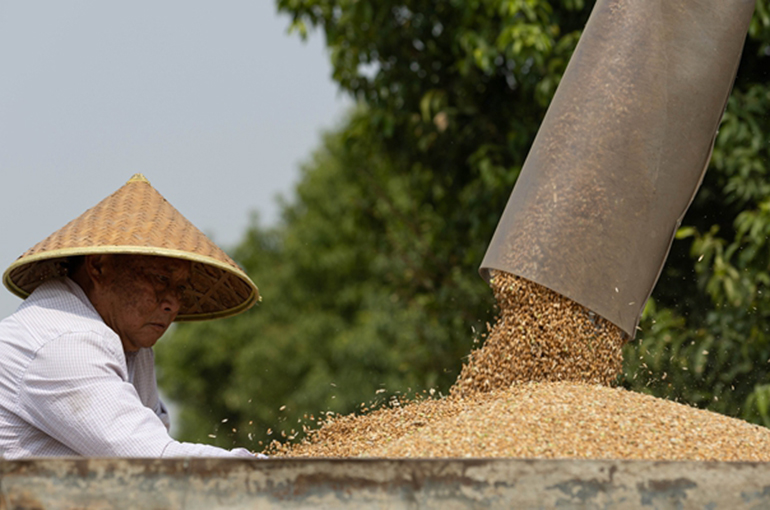In a year marked by tumultuous weather patterns and fluctuating global supply, China is making headlines by importing record volumes of wheat. The world’s largest wheat producer and consumer, China’s insatiable appetite for this staple grain has been fueled by a series of factors, including rain-damaged crops at home and concerns over dry weather in major exporting nations. These developments are not only impacting China’s domestic agriculture but also influencing the global wheat market.
China’s Wheat-Buying Spree
China’s rapid wheat buying spree is set to continue into 2024, with trading sources estimating that the country’s 2023 wheat imports will reach approximately 12 million tons, surpassing the record 9.96 million tons imported in 2022. This surge in imports is set to support global wheat prices, which have fallen by over a quarter this year based on the Chicago futures benchmark price. A decline in prices can be attributed to the abundant supplies from Russia, a leading wheat exporter.
In October, China made headlines by purchasing around two million metric tons of new-crop Australian wheat, scheduled for shipments starting in December. Additionally, it booked about 2.5 million metric tons of French wheat between September and December-March shipments, an unusually large volume for this time of the year.
Rain Damage and Crop Quality
China’s domestic wheat production has faced challenges this year, with the country’s wheat crop shrinking by 0.9% to 134.5 million tons, marking the first decline in seven years. The decline was attributed to heavy rain that damaged mature grains in central growing regions just before the harvest. While Beijing has not provided an official crop quality assessment, industry estimates suggest that approximately 25 million tons, or around 20% of China’s harvest, was damaged by rain. Some of this rain-damaged wheat will be suitable only for animal feed or for blending with higher quality imported wheat before milling into flour.
Quality Gap and Global Impact
Australia, a major supplier of wheat to China, is expected to have a smaller wheat crop this year due to dry conditions associated with the El Niño weather pattern. Despite the reduced output, the quality of Australian wheat is better this year, with higher protein content. This quality improvement provides an opportunity for Australia to fill the quality gap in China’s wheat supply, particularly for high-protein milling wheat.
China’s Imports Stabilize Global Wheat Prices
While factors like rain damage and crop quality have contributed to China’s aggressive wheat imports, attractive prices remain a significant driver of its imports. With global wheat prices currently at a historic low, China’s strategic purchases reflect its forward-looking approach to securing its wheat supply.
China’s imports have also had a stabilizing effect on global wheat prices, ensuring that the market remains steady even amid the economic tensions between China and Australia. Notably, the tensions between the two nations have recently eased, further facilitating China’s purchases of Australian wheat.
Looking Ahead
As China’s appetite for high-quality wheat grows and Australian supplies tighten due to lower output, the nation is expected to import more wheat from the United States, a shift that may result in higher global prices. Given the declining wheat output in Australia, China is likely to increase its imports of French wheat in the coming months.
The impact of China’s wheat-buying spree extends beyond its borders. Rival importers such as Indonesia and Japan may now explore alternative sources in North America and the Black Sea region to meet their wheat demands.
(Source: Naveen Thukral | Dominique Patton | Peter Hobson | Gus Trompiz | Julie Ingwersen | Tony Munroe | Simon Cameron-Moore | Reuters)









